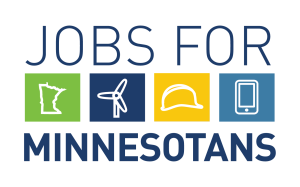3rd Mining Industry Day Friday in Chisholm
Mesabi Daily News
Angie Riebe
Job hunters will have the opportunity to meet face-to-face with mining industry employers during the 3rd Annual Mining Industry Day.
The free event, set for 10 a.m. to 2 p.m. Friday at the Minnesota Discovery Center in Chisholm, will showcase mines and mining-related companies that have job openings — from entry level to highly skilled.
It is open to laborers, drivers, operators, mechanics, millwrights, electricians, testing and engineering technicians, engineers, IT, human resources, internships, and others.
Good Environment, Good Jobs: We Can Have Both
Mesabi Daily News
Opinion: Frank Ongaro (Mining Minnesota)
The Wall Street Journal recently published an opinion piece about the environmentalist’s Catch-22. The article was reminiscent of the cries we hear in Minnesota for sustainability and for reducing our carbon footprint.
Ironically, these pleas for a greener future forget that we rely on metals to execute this utopian vision. The voices are from the same individuals who frame copper-nickel mining as a dichotomous argument — jobs versus the environment.
But this simply isn’t a fair or accurate portrayal of the issues at hand. We are all environmentalists and we all enjoy the beauty and serenity of Minnesota’s wilderness. Our state has a lot to offer outdoor enthusiasts, and with a population above 3.5 million, there are many people who call Minnesota home who have an interest in protecting the outdoors for future generations.
A majority of these 3.5 million individuals also need jobs — jobs that support their families and provide opportunities for future generations of Minnesotans. Thankfully, we can have both — the environment and mining have coexisted for more than 130 years and with modern technologies, will continue to do so as we expand the state’s rich mining tradition.
Demand for U.S. Minerals on the Rise
Minerals are vital to manufacturing products and technologies that propel the U.S. economy, fostering innovation and supporting U.S. industrial competitiveness. A growing global population, and development of new technologies and products that rely on greater combinations of minerals, have increased demand for raw materials.
U of M Officials Seek Money from State for Mining Research
Duluth News Tribune
John Myers
Frank Ongaro, executive director of Mining Minnesota, the copper-nickel industry group, said he’s heard few details on the initiative.
“We’ll be watching and paying attention,” Ongaro said. “But it strikes me that if the university can fund and support research aimed at bettering the state’s mining industry, at the same time the mining industry is giving so much back to the state, that’s a good thing all around.”
Weberg said he expects the initiative to act as a problem solver for the industry as well as help allay fears of mining critics and skeptics.
“What can we do to make Minnesota mining more efficient; to reduce its footprint on the land; to reduce its energy use and carbon footprint? What can we do to reduce waste so that less raw material has to be mined?” Weberg said.
Read more: http://www.duluthnewstribune.com/content/u-m-officials-seek-money-state-mining-research
MPR News
Martin Moylan
Duluth Metals, the firm that’s been pushing to build a copper-nickel mine in northeast Minnesota, said Monday it is selling its operations to Chilean mining giant Antofagasta PLC for about $85 million.
Antofagasta and Duluth Metals have been partners in Twin Metals Minnesota, which wants to build a massive underground mine near Ely, Minnesota, just a few miles south of the Boundary Waters Canoe Area Wilderness.
The region may hold what could be the world’s largest untapped source of copper and other precious metals valued at perhaps $100 billion.
Read more: http://www.mprnews.org/story/2014/11/03/duluth-metals-sale-to-antofagasta
